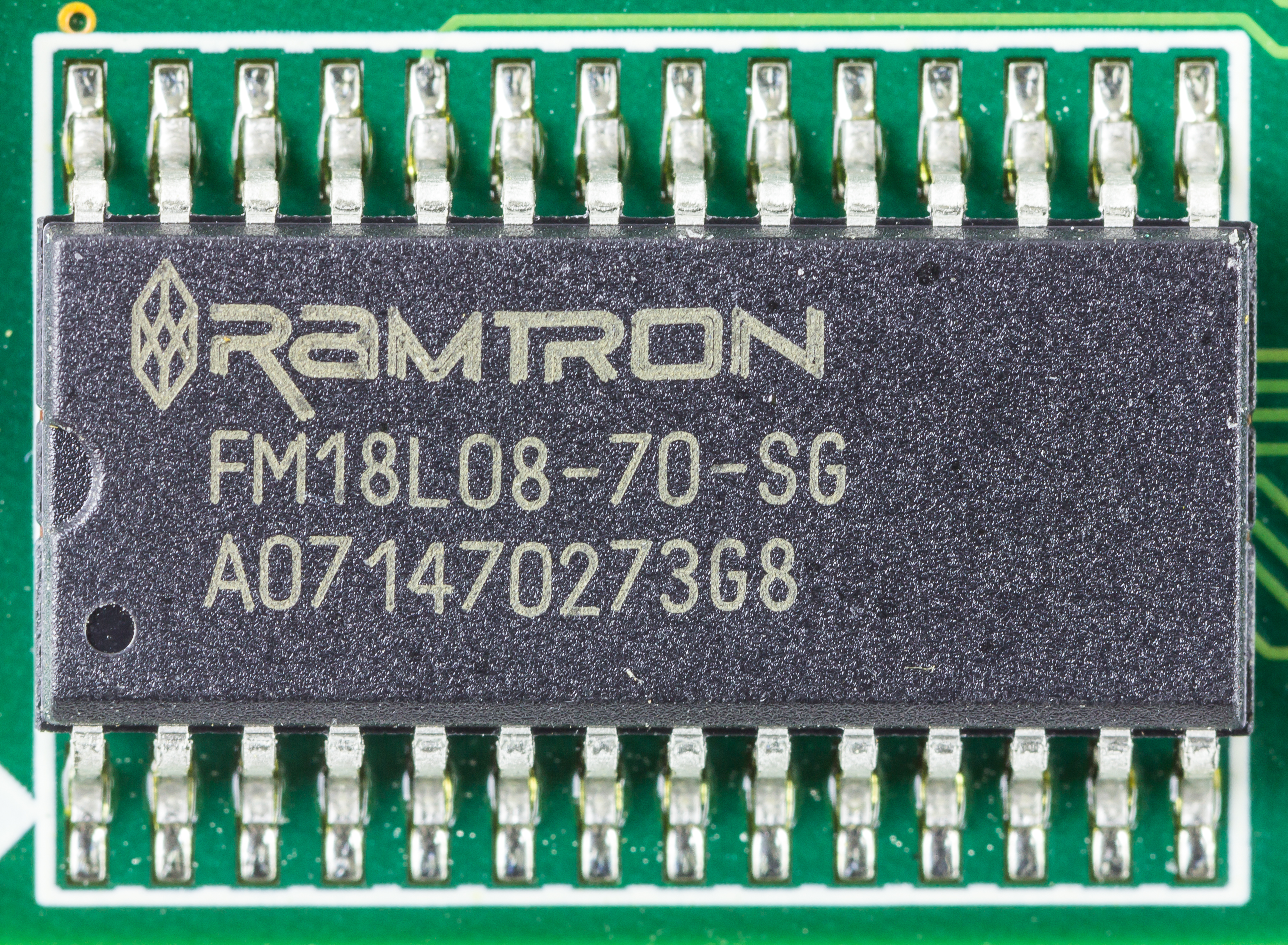|
Centre Spatial Universitaire Montpellier-Nîmes
The Centre Spatial Universitaire (CSU) Montpellier-Nîmes (Montpellier-Nîmes University Space Center) is a division of the University of Montpellier. Its purpose is to educate students in space sciences through the design, production and testing of nanosatellites. The CSU was created to consolidate nanosatellite activities that were initiated in 2006 by the RADIAC (radiation and components) team of the Institut d'Electronique et des Systèmes, a research institute also affiliated with the university. Education and research Student participation The CSU engages students at various levels from several institutions in nanosatellite projects: * B.Sc. and M.Sc. students from the University of Montpellier * Students from the Nîmes and Montpellier IUTs (university technological institutes) * Ph.D. candidates Research The CSU also coordinates Ph.D. and postdoctoral students funded by the Van Allen Foundation. These students, along with CSU personnel, present their scientific wor ... [...More Info...] [...Related Items...] OR: [Wikipedia] [Google] [Baidu] |
Montpellier
Montpellier (; ) is a city in southern France near the Mediterranean Sea. One of the largest urban centres in the region of Occitania (administrative region), Occitania, Montpellier is the prefecture of the Departments of France, department of Hérault. At the 2020 census, 299,096 people lived in the city proper, while its Functional area (France), metropolitan area had a population of 813,272. The inhabitants are called ''Montpelliérains''. In the Middle Ages, Montpellier was an important city of the Crown of Aragon (and was the birthplace of James I of Aragon, James I), and then of Kingdom of Majorca, Majorca, before its sale to France in 1349. Established in 1220, the University of Montpellier is one of the List of oldest universities in continuous operation, oldest universities in the world and has the oldest medical school still in operation, with notable alumni such as Petrarch, Nostradamus and François Rabelais. Above the medieval city, the ancient citadel of Montpelli ... [...More Info...] [...Related Items...] OR: [Wikipedia] [Google] [Baidu] |
PSLV
The Polar Satellite Launch Vehicle (PSLV) is an expendable medium-lift launch vehicle designed and operated by the Indian Space Research Organisation (ISRO). It was developed to allow India to launch its Indian Remote Sensing (IRS) satellites into Sun-synchronous orbits, a service that was, until the advent of the PSLV in 1993, only commercially available from Russia. PSLV can also launch small size satellites into Geostationary Transfer Orbit (GTO). Some notable payloads launched by PSLV include India's first lunar probe Chandrayaan-1, India's first interplanetary mission, Mars Orbiter Mission (Mangalyaan), India's first space observatory, Astrosat and India's first Solar mission, Aditya-L1. PSLV has gained credibility as a leading provider of rideshare services for small satellites, owing to its numerous multi-satellite deployment campaigns with auxiliary payloads, usually ride-sharing along with an Indian primary payload. As of June 2022, PSLV has launched 345 fo ... [...More Info...] [...Related Items...] OR: [Wikipedia] [Google] [Baidu] |
Student Satellites
A student is a person enrolled in a school or other educational institution, or more generally, a person who takes a special interest in a subject. In the United Kingdom and most commonwealth countries, a "student" attends a secondary school or higher (e.g., college or university); those in primary or elementary schools are "pupils". Africa Nigeria In Nigeria, education is classified into four systems known as a 6-3-3-4 system of education. It implies six years in primary school, three years in junior secondary, three years in senior secondary and four years in the university. However, the number of years to be spent in university is mostly determined by the course of study. Some courses have longer study lengths than others. Those in primary school are often referred to as pupils. Those in university, as well as those in secondary school, are referred to as students. The Nigerian system of education also has other recognized categories like the polytechnics and colleges of ... [...More Info...] [...Related Items...] OR: [Wikipedia] [Google] [Baidu] |
Radio Ham
An amateur radio operator is someone who uses equipment at an amateur radio station to engage in two-way personal communications with other amateur operators on radio frequencies assigned to the amateur radio service. Amateur radio operators have been granted an amateur radio license by a governmental regulatory authority after passing an examination on applicable regulations, electronics, radio theory, and radio operation. As a component of their license, amateur radio operators are assigned a call sign that they use to identify themselves during communication. About three million amateur radio operators are currently active worldwide. Amateur radio operators are also known as radio amateurs or hams. The term "ham" as a nickname for amateur radio operators originated in a pejorative usage (like "ham actor") by operators in commercial and professional radio communities, and dates to wired telegraphy. The word was subsequently adopted by amateur radio operators. Demographics ... [...More Info...] [...Related Items...] OR: [Wikipedia] [Google] [Baidu] |
Burkina-Faso
Burkina Faso is a landlocked country in West Africa, bordered by Mali to the northwest, Niger to the northeast, Benin to the southeast, Togo and Ghana to the south, and Ivory Coast to the southwest. It covers an area of 274,223 km2 (105,878 sq mi). In 2024, the country had an estimated population of approximately 23,286,000. Previously called the Republic of Upper Volta (1958–1984), it was renamed Burkina Faso by then-president Thomas Sankara. Its citizens are known as Burkinabes, and its capital and largest city is Ouagadougou. The largest ethnic group in Burkina Faso is the Mossi people, who settled the area in the 11th and 13th centuries. They established powerful kingdoms such as Ouagadougou, Tenkodogo, and Yatenga. In 1896, it was colonized by the French as part of French West Africa; in 1958, Upper Volta became a self-governing colony within the French Community. In 1960, it gained full independence with Maurice Yaméogo as president. Since it gained its indepen ... [...More Info...] [...Related Items...] OR: [Wikipedia] [Google] [Baidu] |
Madagascar
Madagascar, officially the Republic of Madagascar, is an island country that includes the island of Madagascar and numerous smaller peripheral islands. Lying off the southeastern coast of Africa, it is the world's List of islands by area, fourth largest island, the List of island countries, second-largest island country, and the List of countries and dependencies by area, 46th largest country overall. Its capital and List of cities in Madagascar, largest city is Antananarivo. Following the prehistoric breakup of the supercontinent Gondwana, Madagascar split from Africa during the Early Jurassic period, around 180 million years ago, and separated from the Indian subcontinent approximately 90 million years ago. This isolation allowed native plants and animals to evolve in relative seclusion; as a result, Madagascar is a biodiversity hotspot and one of the world's 17 megadiverse countries, with over 90% of its wildlife of Madagascar, wildlife being endemic. The island has ... [...More Info...] [...Related Items...] OR: [Wikipedia] [Google] [Baidu] |
Mediterranean
The Mediterranean Sea ( ) is a sea connected to the Atlantic Ocean, surrounded by the Mediterranean basin and almost completely enclosed by land: on the east by the Levant in West Asia, on the north by Anatolia in West Asia and Southern Europe, on the south by North Africa, and on the west almost by the Morocco–Spain border. The Mediterranean Sea covers an area of about , representing 0.7% of the global ocean surface, but its connection to the Atlantic via the Strait of Gibraltar—the narrow strait that connects the Atlantic Ocean to the Mediterranean Sea and separates the Iberian Peninsula in Europe from Morocco in Africa—is only wide. Geological evidence indicates that around 5.9 million years ago, the Mediterranean was cut off from the Atlantic and was partly or completely desiccated over a period of some 600,000 years during the Messinian salinity crisis before being refilled by the Zanclean flood about 5.3 million years ago. The sea was an important rout ... [...More Info...] [...Related Items...] OR: [Wikipedia] [Google] [Baidu] |
Météo-France
Météo-France is the official French meteorological administration, also offering services to Andorra and Monaco. It has the powers of the state and can exercise them in relation to meteorology. Météo-France is in charge of observing, studying, and forecasting weather and monitoring snowpack. The organization also issues weather warnings for the Metropole and the overseas territories. Météo-France is also in charge of recording and predicting the climate. Organisation The organisation was established by decree in June 1993 and is a department of the Ministry of Transportation. It is headquartered in Paris but many domestic operations have been decentralised to Toulouse. Its budget of around €300 million is funded by state grants, aeronautic royalties and sale of commercial services. Météo-France has a particularly strong international presence, and is the French representative at the World Meteorological Organization. The organisation is a leading member of EUM ... [...More Info...] [...Related Items...] OR: [Wikipedia] [Google] [Baidu] |
Ferroelectric RAM
Ferroelectric RAM (FeRAM, F-RAM or FRAM) is a random-access memory similar in construction to DRAM but using a ferroelectric layer instead of a dielectric layer to achieve non-volatility. FeRAM is one of a growing number of alternative non-volatile random-access memory technologies that offer the same functionality as flash memory. An FeRAM chip contains a thin film of ferroelectric material, often lead zirconate titanate, commonly referred to as PZT. The atoms in the PZT layer change polarity in an electric field, thereby producing a power-efficient binary switch. However, the most important aspect of the PZT is that it is not affected by power disruption or magnetic interference, making FeRAM a reliable nonvolatile memory. FeRAM's advantages over Flash include: lower power usage, faster write speeds and a much greater maximum read/write endurance (about 1010 to 1015 cycles). FeRAMs have data retention times of more than 10 years at +85 °C (up to many decades at lower ... [...More Info...] [...Related Items...] OR: [Wikipedia] [Google] [Baidu] |
Magnetic Random Access Memory
Magnetoresistive random-access memory (MRAM) is a type of non-volatile random-access memory which stores data in magnetic domains. Developed in the mid-1980s, proponents have argued that magnetoresistive RAM will eventually surpass competing technologies to become a dominant or even universal memory. Currently, memory technologies in use such as flash RAM and DRAM have practical advantages that have so far kept MRAM in a niche role in the market. Description Unlike conventional RAM chip technologies, data in MRAM is not stored as electric charge or current flows, but by magnetic storage elements. The elements are formed from two ferromagnetic plates, each of which can hold a magnetization, separated by a thin insulating layer. One of the two plates is a permanent magnet set to a particular polarity; the other plate's magnetization can be changed to match that of an external field to store memory. This configuration is known as a magnetic tunnel junction (MTJ) and is the simplest ... [...More Info...] [...Related Items...] OR: [Wikipedia] [Google] [Baidu] |
Static Random Access Memory
Static random-access memory (static RAM or SRAM) is a type of random-access memory (RAM) that uses latching circuitry (flip-flop) to store each bit. SRAM is volatile memory; data is lost when power is removed. The ''static'' qualifier differentiates SRAM from ''dynamic'' random-access memory (DRAM): * SRAM will hold its data permanently in the presence of power, while data in DRAM decays in seconds and thus must be periodically refreshed. * SRAM is faster than DRAM but it is more expensive in terms of silicon area and cost. * Typically, SRAM is used for the cache and internal registers of a CPU while DRAM is used for a computer's main memory. History Semiconductor bipolar SRAM was invented in 1963 by Robert Norman at Fairchild Semiconductor. Metal–oxide–semiconductor SRAM (MOS-SRAM) was invented in 1964 by John Schmidt at Fairchild Semiconductor. The first device was a 64-bit MOS p-channel SRAM. SRAM was the main driver behind any new CMOS-based technology fabrica ... [...More Info...] [...Related Items...] OR: [Wikipedia] [Google] [Baidu] |





